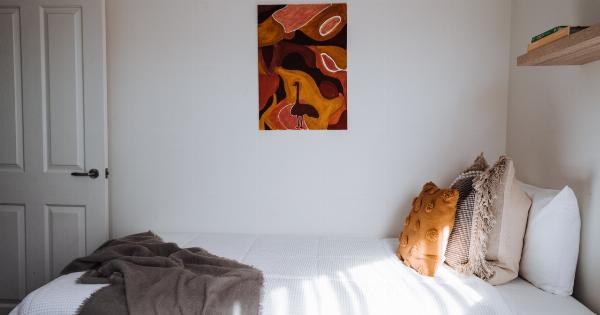Transitioning your baby from a swing to a crib is an important step in their growth and development.
While swings can be a great tool to soothe and comfort your little one, it is essential to provide them with a safe and secure sleeping environment in a crib. This process may take time and patience, but with the right approach, you can help your baby make a smooth transition. Here are some tips and strategies to guide you through this transition phase:.
1. Start by Introducing the Crib
The first step in transitioning your baby from a swing to a crib is to introduce them to their new sleeping space. Start by placing the crib in the same room as the swing so that your baby can get familiar with it.
Let them explore the crib during playtime so that they can associate it with positive experiences.
2. Establish a Bedtime Routine
A consistent bedtime routine is crucial for helping your baby transition to the crib. Create a routine that involves calming activities like a warm bath, gentle massage, and reading a bedtime story.
By following the same routine every night, your baby will start associating these activities with sleep and comfort.
3. Gradually Reduce Swing Time
Reducing swing time gradually is an effective way to wean your baby off the swing and encourage them to sleep in the crib. Begin by shortening the duration of swing time and gradually increase the time they spend in the crib.
Monitor their reactions and adjust the pace accordingly.
4. Use Familiar Bedding
To make the crib feel more familiar and comfortable, use bedding that your baby is used to from the swing. This could include using the same blankets or swaddles. The familiar scent and texture will help ease the transition from the swing to the crib.
5. Create a Relaxing Sleep Environment
Ensure that the crib is set up in a calm and quiet area of the room, away from any distractions or noise. Use blackout curtains or shades to create a dark and soothing sleep environment.
Soft lighting or a nightlight can also be helpful to provide a sense of security.
6. Gradually Decrease Motion
If your baby is used to the motion of the swing, it can be challenging for them to adjust to the stillness of the crib. To help with this transition, you can simulate the movement by gently rocking the crib or using a crib mobile with soothing music.
Gradually decrease the intensity of the motion over time.
7. Offer Comfort and Security
During the transition phase, it is essential to provide your baby with comfort and security.
Use techniques such as swaddling, offering a pacifier, or using white noise machines to create a sense of familiarity and soothe your baby to sleep in the crib.
8. Be Consistent with Sleep Associations
Consistency is key when transitioning your baby to the crib. If your baby falls asleep in the swing, gently transfer them to the crib while they are drowsy but still awake. This will help them learn to associate the crib with falling asleep.
9. Give It Time
Remember that every baby is different, and it may take time for them to adjust to sleeping in the crib. Be patient and understanding during this transition phase. Offer reassurance and comfort to help them feel secure in their new sleeping environment.
10. Consult with Your Pediatrician
If you are encountering significant difficulties during the transition or your baby is experiencing sleep disruptions, it is always a good idea to consult with your pediatrician.
They can provide personalized advice and support to address any concerns or challenges you may face.




























